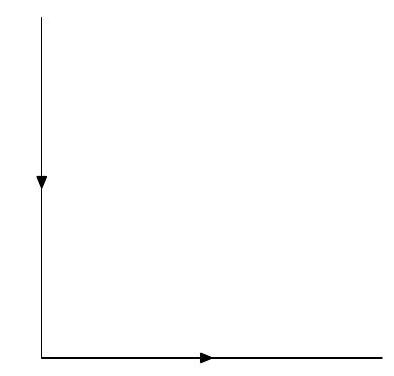(i) By assuming the validity of the Fourier transform pair, prove the validity of the following transform pair:
q^(k)=∫0∞e−ikxq(x)dx,Imk⩽0,q(x)=2π1∫−∞∞eikxq^(k)dk+2πc∫Leikxq^(−k)dk,0<x<∞,
where c is an arbitrary complex constant and L is the union of the two rays arg k=2π and argk=0 with the orientation shown in the figure below:

The contour L.
(ii) Verify that the partial differential equation
iqt+qxx=0,0<x<∞,t>0,
can be rewritten in the following form:
(e−ikx+ik2tq)t−[e−ikx+ik2t(−kq+iqx)]x=0,k∈C.
Consider equation (2) supplemented with the conditions
q(x,0)=q0(x),0<x<∞q(x,t) vanishes sufficiently fast for all t as x→∞
By using equations (1a) and (3), show that
q^(k,t)=e−ik2tq^0(k)+e−ik2t[kg~0(k2,t)−ig~1(k2,t)],Imk⩽0
where
q^0(k)=∫0∞e−ikxq0(x)dx,Imk⩽0
Part II, 2011 List of Questions
[TURN OVER
g~0(k,t)=∫0teikτq(0,τ)dτ,g~1(k,t)=∫0teikτqx(0,τ)dτ,k∈C,t>0.
Use (1b) to invert equation (5) and furthermore show that
∫−∞∞eikx−ik2t[kg~0(k2,t)+ig~1(k2,t)]dk=∫Leikx−ik2t[kg~0(k2,t)+ig~1(k2,t)]dk,t>0,x>0
Hence determine the constant c so that the solution of equation (2), with the conditions (4) and with the condition that either q(0,t) or qx(0,t) is given, can be expressed in terms of an integral involving q^0(k) and either g~0 or g~1.
